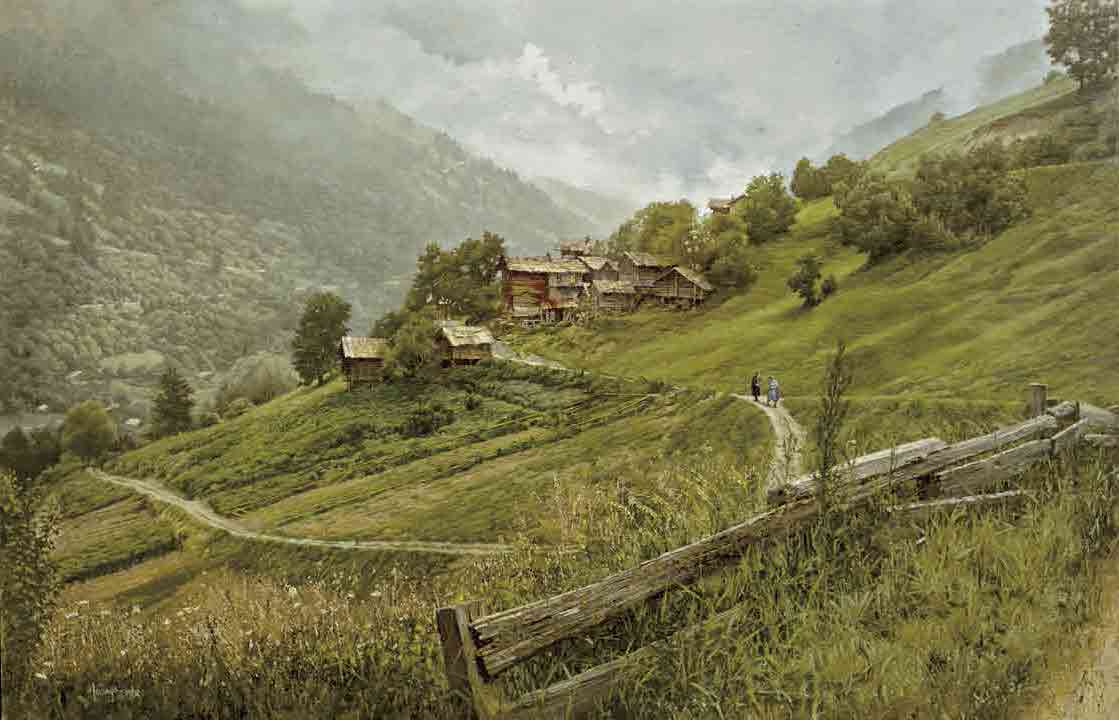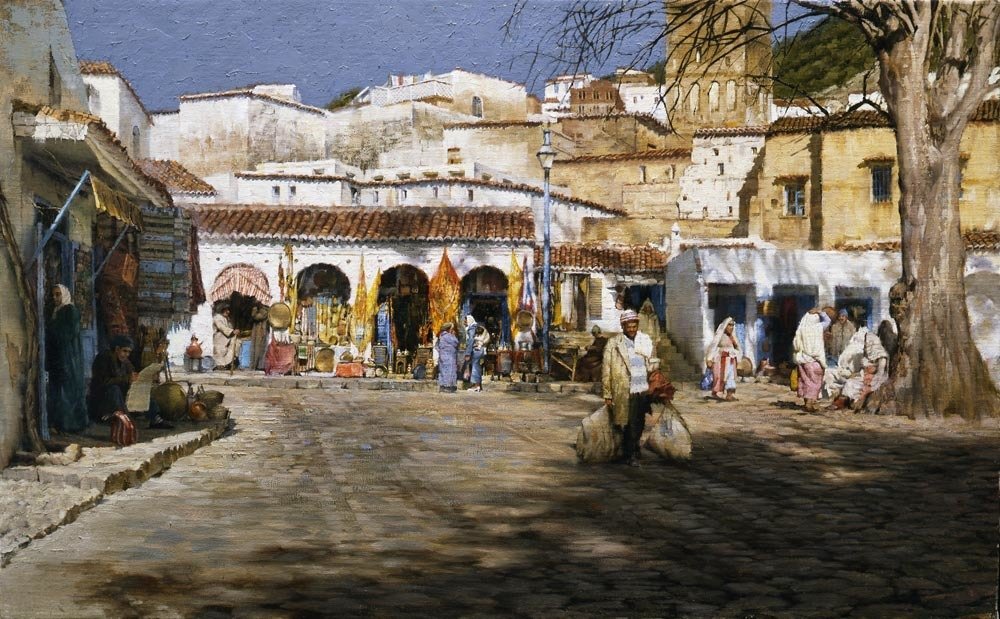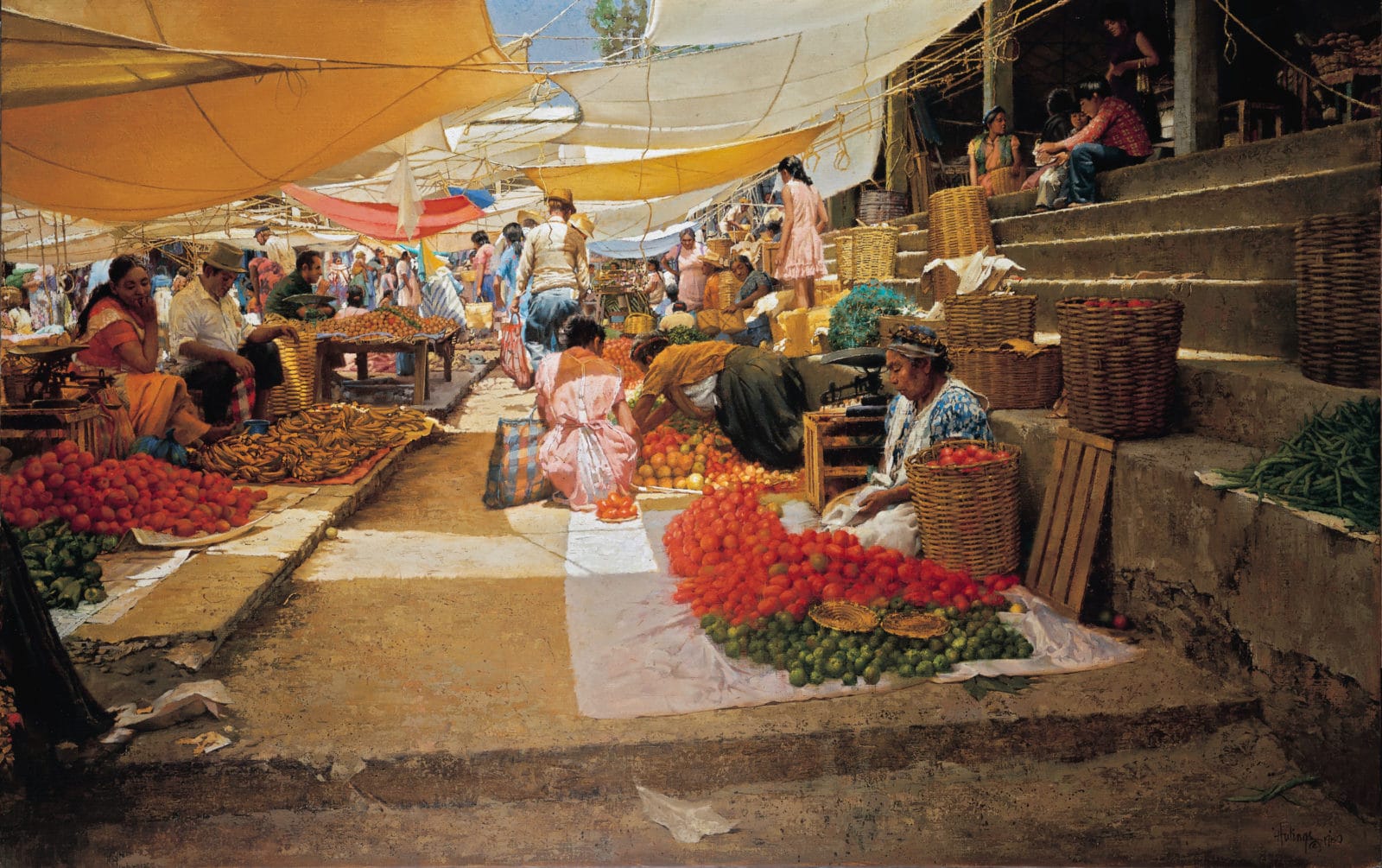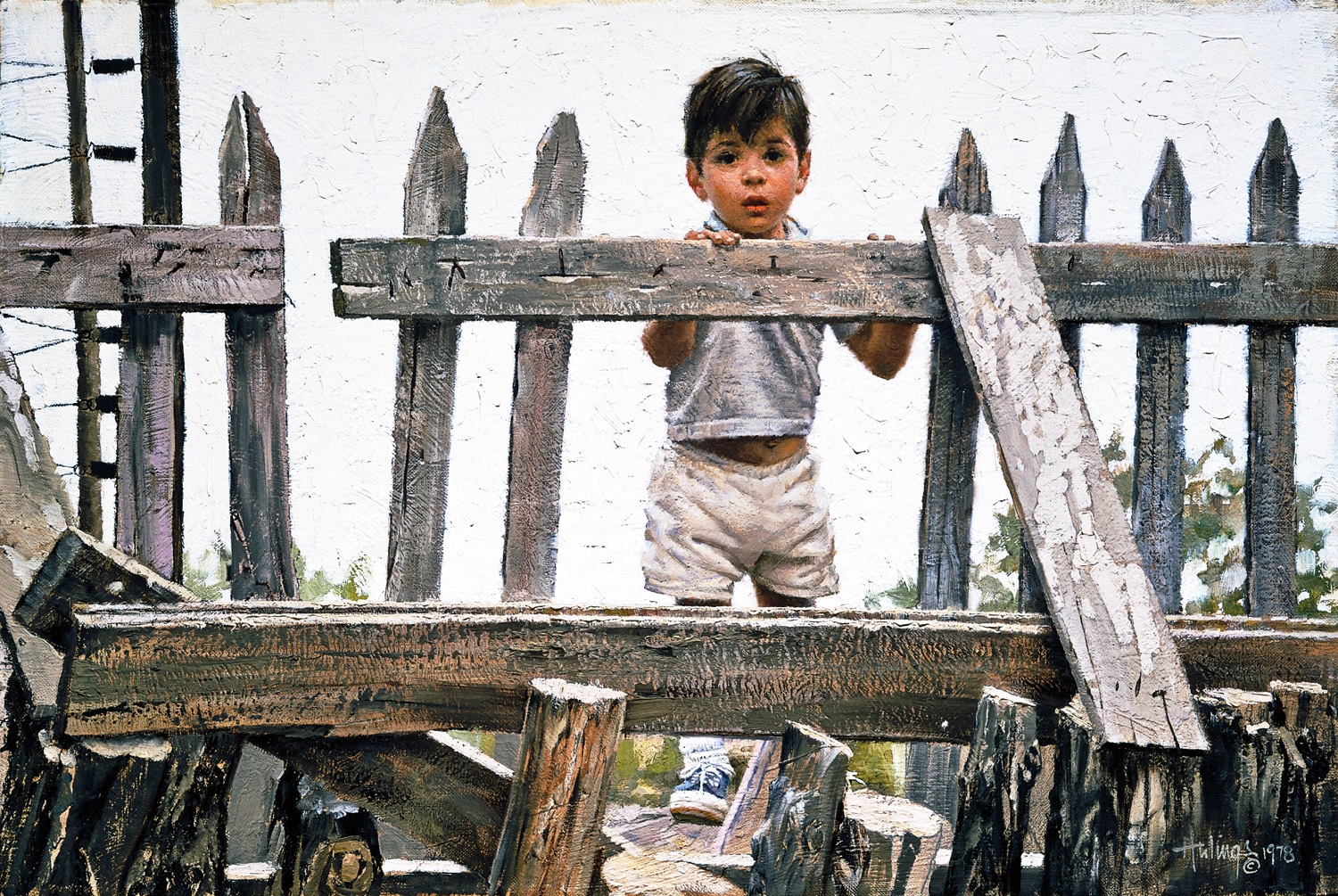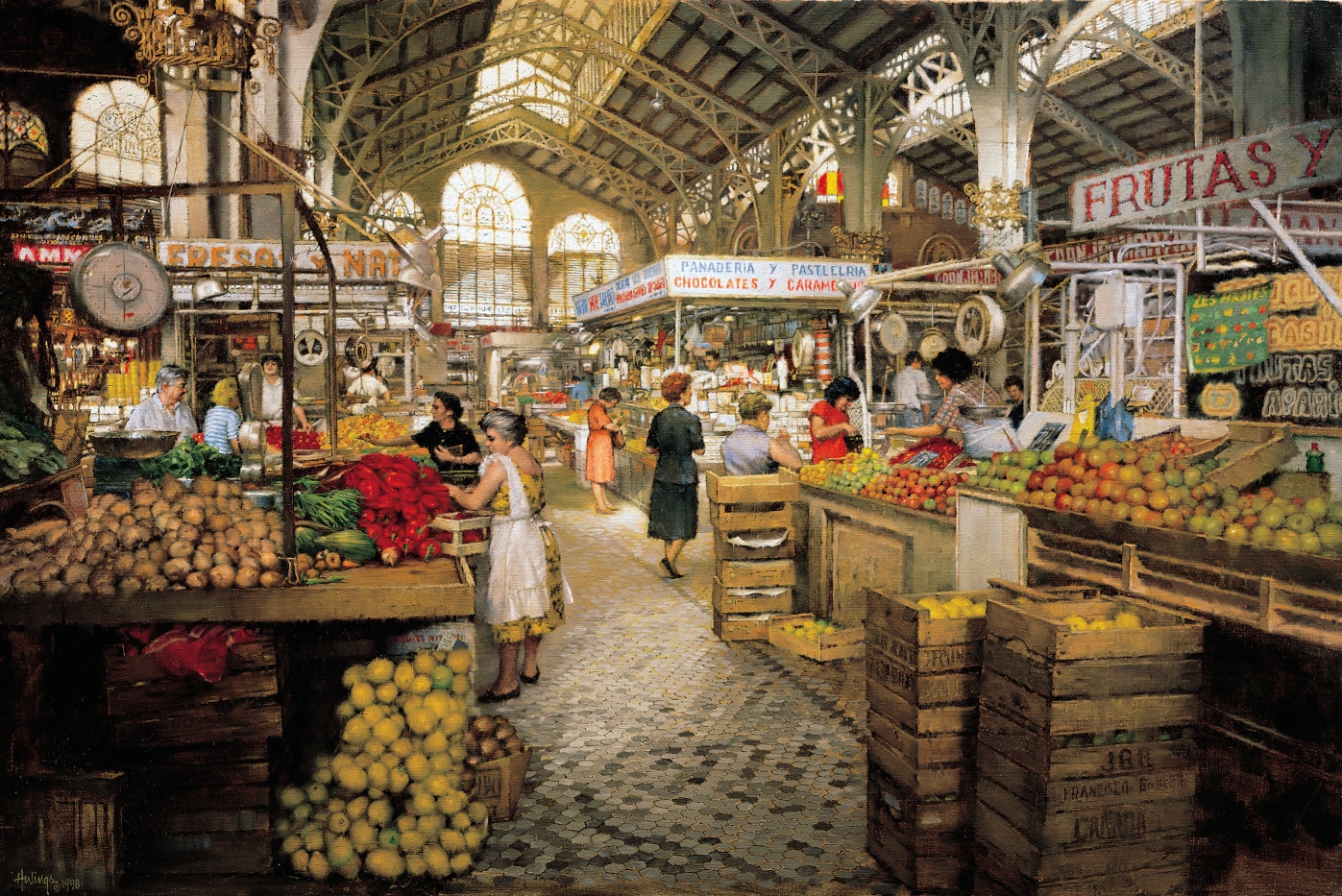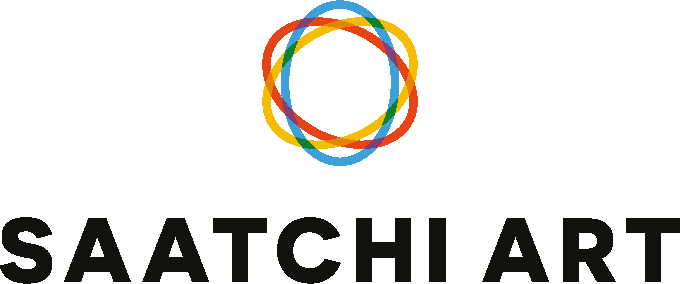“There were majestic mountains stationed behind those clouds and they revealed themselves periodically while I was painting. I chose in the end to cover them with mist because they stole interest from my hillside village.”
Late summer bucolic Swiss beauty. Too soon it will be buried in alpine snow. When you think of Clark Hulings’ European work, you might imagine Spain, Ireland or even Yugoslavia—but here we are today, visiting two mountainsides in Switzerland. The Jungfrau painting was done en plein air in 1954, and the larger finished work was done in the studio decades later. The diagonal slices forcefully convey the nature of life in the Alps.

Here’s what my father had to say about the country, and the work:
“Switzerland is a great place to paint. Its people are polite and considerate of artists, and there is a wide choice of painting subjects to satisfy any taste or mood. There are picturesque old cities like Lausanne, Basel and Lucerne. There are lovely lakes like Leman and Lugano. There are quaint domestic farm scenes where they sill employ oxen and horses. There is German, French and Italian architecture available, depending on the region, and there is spectacular mountain scenery.
“Once Mary and I stayed for a few days in the southern Swiss city of Sion. From there, fie or six deep narrow valleys fan out, dotted with tiny settlements like this one, which is called Cerise. There were majestic mountains stationed behind those clouds and they revealed themselves periodically while I was painting. I chose in the end to cover them with mist because they stole interest from my hillside village.”
Access to the Alps
If you’d like to see the Alps anytime, both Cerise, Swiss Village Near Sion and Jungfrau are featured in A Gallery of Paintings by Clark Hulings, which you can pick up at our online store.

